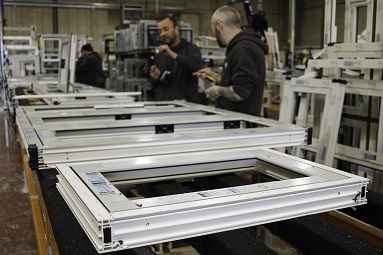Future Gazing, Glazing And The Future Homes Standard
In the continued drive to achieve net zero by 2050, the GGF has facilitated a meeting with Chris Beedel and its members and the Department of Levelling Up...
Read Full Article
HWL has warned that an extension of current new build requirements for laminated glass to be used in accessible windows and doors in home improvements, would massively increase costs and complexity for installers and their fabricators.
The specialist manufacturer of Residence Collection says any decision to extend current provisions under PAS24 to replacement markets as part of the revision of Part Q would increase weight and associated handling costs, for anyone fitting R9 as a glass-bonded system.
With the consultation on Part Q already overdue and expected to start early in 2023, HWL warns the new requirement could impact the industry as early as summer next year.
“It can be painful enough in a new build environment where in most cases access is more straight forward. The idea of handling large R9 frames and glass bonded units in a period installation is the thing of nightmares for fitters.”
– Graham Howatson
Director, HWL
Bad signs
“Nothing is definite but the signs point to an extension of current Part Q new build requirements under PAS24:2016 to the replacement market,” continues HWL’s Howatson. “That would mean, amongst other things, laminate glass on accessible doors and windows bringing far more weight into an already heavy to handle product.”
He points out that a standard IGU in a 4/20/4mm configuration will weigh in at around 20kg per square metre. This compares to a standard laminate unit in a 6/16/8.8mm configuration which comes in at around 35kg per square metre - a 75% increase in weight.
“It’s not only the inconvenience and the cost,” adds Howatson. “There’s also a health and safety issue - the kind of weights we’re talking about present very real risk of injury.
“Handling frames and glass separately doesn’t eliminate that risk entirely, but it does reduce it.”
Reduced labour
HWL pioneered the development of a non-glass-bonded 90° jointed R9 window in 2017, replicating a traditional 90° mechanical joint on both sides of a welded sash. This effectively eliminates the pre-existing requirement to glass-bond the sash, reducing weight and simplifying handling and installation by allowing installers to glaze windows in the same way as any other PVC-U system.
Cost modelling by the trade fabricator suggests that this delivers savings of up to £500 on an average three-day install by making handling easier and so that there’s no requirement to bring in more labour into fitting teams.
Howatson argues it also allows installers to lower glass costs by sourcing IGUs locally, delivering on average a further 10% saving. This extends to the supply of astragal bars, which HWL offers in kit form, allowing installers to source heritage designs locally.”
He concludes: “We need to see where Part Q goes but the fact is at present there are lots of pointers which suggest the requirement for laminate glass that we have in new build will be extended to home improvement.
“If that happens, it’s going to add big costs for everyone but for installers fitting R9 as a glass bonded system, it will add a host of additional complexities and overhead.”
Picture: Adding a requirement for laminate glass in accessible windows in the replacements market will add costs and a health & safety risk, argues Graham Howatson, a director at Residence 9 fabricator, HWL.
Article written by Cathryn Ellis
20th October 2022